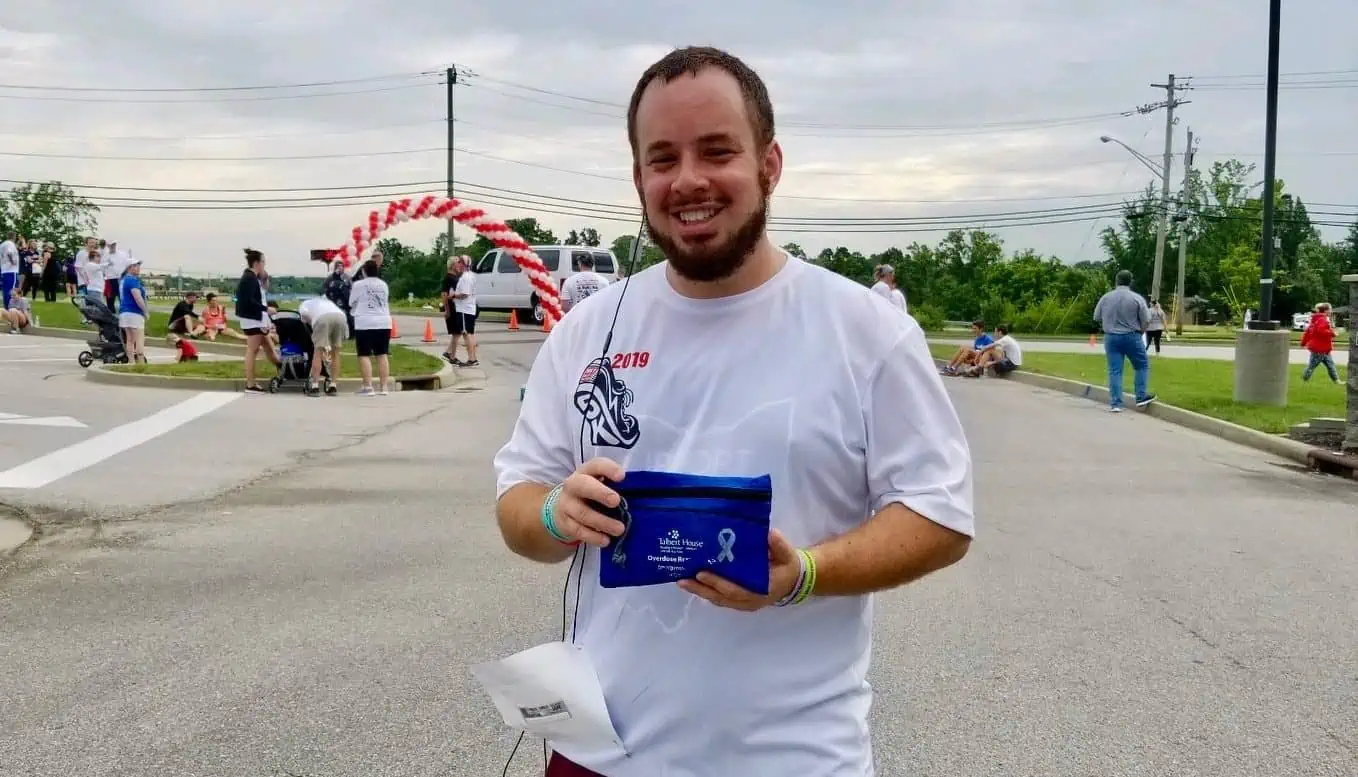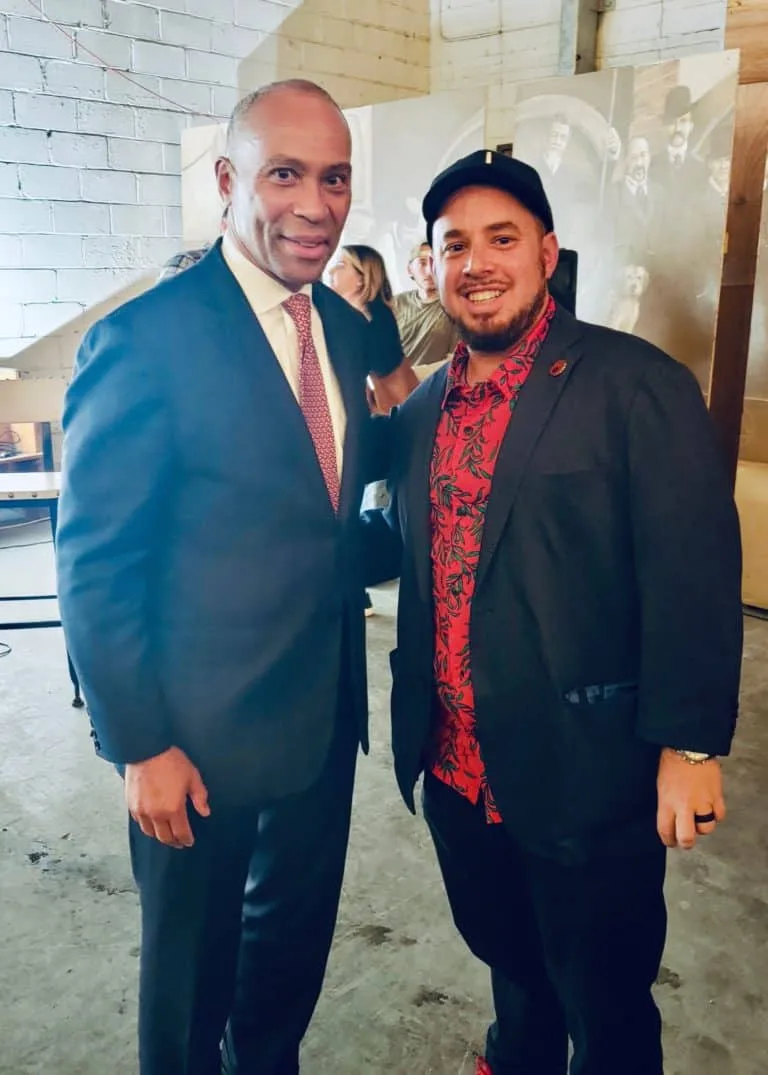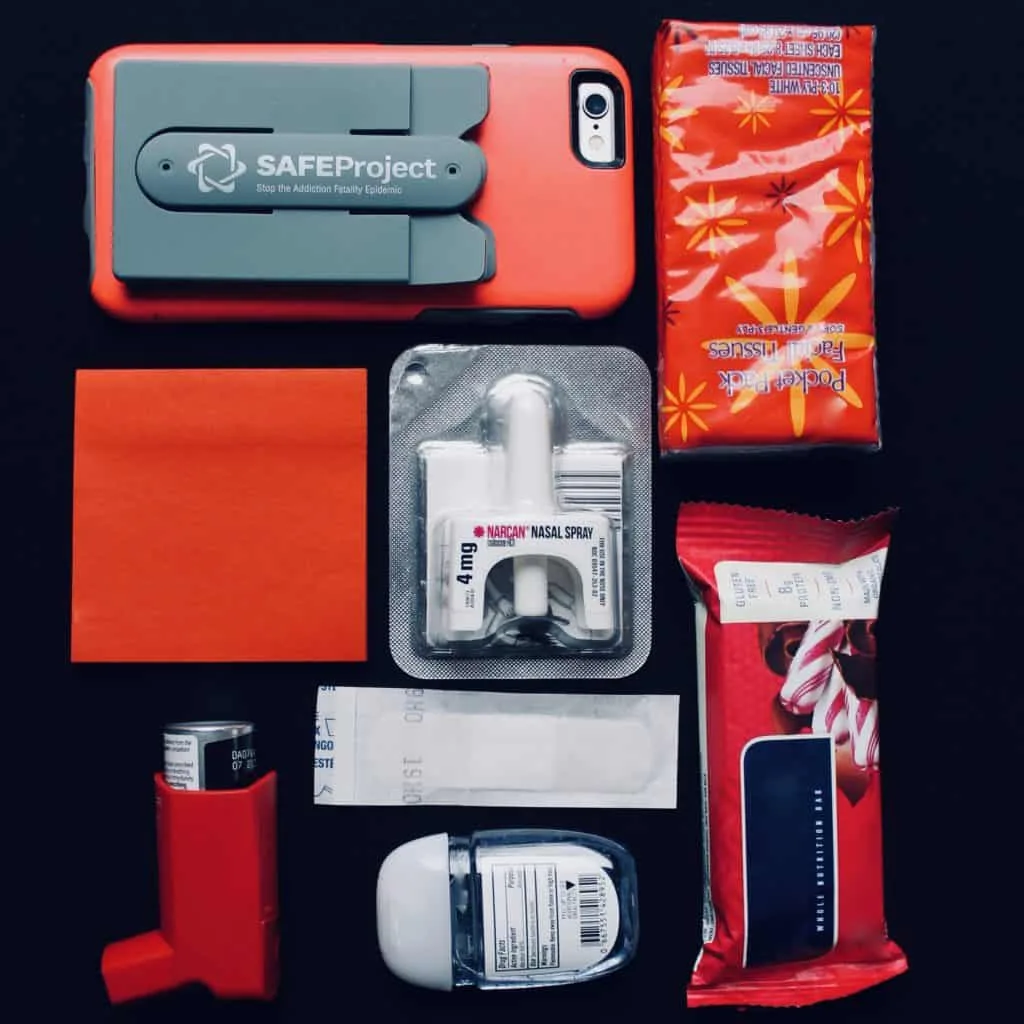We first met Jay Shifman when he volunteered with SAFE’s Naloxone Awareness Project, helping to promote awareness of Naloxone and help people find it in their communities. But Jay does more than just promote this lifesaving drug – it goes everywhere he does!

Narcan/Naloxone comes with an unintended additional purchase, stigma … but the more people that ask for it, the more that stigma will chip away.
Jay Shifman
SAFE: Jay, let’s get right to it. As a person in recovery, is there a personal story behind what prompted you to carry Narcan?
JAY: It’s all personal to me. In Cincinnati, where I’m from, it was front-page material. The overdose rate was skyrocketing. This was back in 2015, 2016. And it felt like the response was too slow. I’d recently started speaking about my experience as a person in recovery. So I felt like carrying Narcan was the least I could do. And I’ve been carrying it ever since.
I mean it when I say I carry mine all the time. If you look at pictures of me in a suit, you’ll see the pouch sticking out of my pocket. Because, and I mean this so wholeheartedly, I hope I never have to use it but if I do, I want to be ready.
SAFE: Was it hard to learn?
JAY: I was incredibly lucky. One of the great organizations that set out to do something about the epidemic is a nonprofit called Talbert House that I have a very personal connection to. My mother is a former Board President, so I grew up seeing their amazing work firsthand and truly appreciate all they do. Anyway, they hold trainings that are intensive.
One thing I will say is that simply being Narcan trained without any CPR training — or at the least basic tips on how to assist someone you’ve given Narcan to — can, unfortunately, be unintentionally harmful to the person and there’s nothing worse than trying to assist and accidentally making it worse.
I went on a ride-along with an EMS here in Charleston, SC recently and the phenomenal first responder I was paired with told me she’s unhappy with how little training people are getting and she’s seen the negative effects. We need to push for more AND extended trainings that include at best CPR or at least basic health tips on how to assist. So I really appreciate that Talbert House’s training went beyond simply administering Narcan.

SAFE: Is it hard to get Narcan?
JAY: Yes! Or, at least harder than it should be. In Cincinnati, you can walk into any health center and walk out with it, as long as you’re trained. And many pharmacies carry it. But here in Charleston, SC, I’ve now gone to six locations as part of the SAFE Naloxone Awareness Project, and not a single one had Narcan. All said they could order it, which, OK , yes please! But that’s also not the point. We need to make it ubiquitous. I want it on street corners and mandatory trainings like driving tests. Let’s save lives, people!
SAFE: What about people who may want to carry it, but don’t know how to ask for it?
JAY: Yeah, I get that. Narcan/Naloxone comes with an unintended additional purchase, stigma. Which is sad. But the more people that ask for it, the more that stigma will chip away. So just go into your neighborhood pharmacy and ask the person at the counter to buy Narcan or Naloxone. You’re doing a great public service if you do!
SAFE: You told me once that this is a topic that you will never stop harping on. Why?
JAY: Because it’s literally, and I use that word correctly there, it’s literally saving lives. As my EMS partner said, it needs to be done correctly of course, but if you have the chance to save someone’s life and all it takes is going to a training and carrying around a little product that can fit in your purse. I simply cannot comprehend a reason NOT to do this.
I mean, if they somehow made the defibrillator so small you could carry it around in your pocket, you better believe people would be buying them faster than they could produce them. It’s no different with Narcan.

SAFE: How much do you think the stigma around drugs and Addiction impact people carrying, or even having access to Narcan?
JAY: Oh, 100%. And it’s sad. No one says to the librarian sitting at her desk next to the defibrillator on the wall, “Hey! You’re encouraging people to have heart attacks in here!” I mean that’s just flat out ridiculous. Yet people say that about those who carry Narcan. Further, I’ve heard some say, OK, fine but they can’t carry it around.
Well, I wanted to address that nonsense, so I ran a 5k last summer to raise money for an addiction nonprofit actually, but I ran it with my pouch in my pocket. And it’s not just the Narcan in there. It also has gloves, a mouth guard for CPR and a backup Narcan dose. And you know that pouch didn’t interfere with my running at all!
SAFE: Anything else you want to share today?
JAY: Two things. First, thank you for all SAFE is doing. There are a lot of groups working hard on the mental health and addiction epidemic facing our country — but I honestly believe this, SAFE is in the top two or three organizations. Just amazing work. So thank you!
But for everyone reading this, start the conversation before it’s too late. Ask the people you care about in your life how they’re doing. And listen! Put down your phone, turn off the streaming service and simply talk to them. We all could be doing better.
Mental health care isn’t simply for those who are seriously struggling the way taking care of your physical health isn’t just for those who are already sick. We still exercise. We still eat right. Let’s do the same for our mental health. And if we can make strides in improving our mental health, we can also cut down on drug use and fatalities. And how great would that be?
So remember, go to your pharmacy and ask for Narcan/Naloxone. And if they don’t have it, make them order it! Because only together we can end the epidemic.
Jay Shifman considers himself, above all else, a Mental Health and Addiction advocate. A person in long-term recovery himself, Jay spends every day working to better the lives of those who have or continue to struggle with issues of addiction and mental health. He works with businesses and individuals to establish better mental health practices and writes and speaks about his own experience, and the on-going epidemic around these issues, as often as possible. Jay lives on Daniel Island, outside Charleston, South Carolina, with his wife Lauren and their dog, Nell. You can learn more about Jay at his website JayShifman.com.
Share Your Story
This epidemic has given us one common experience: we have all become experts in our own way. At S.A.F.E. Project, we believe that we strengthen one another by sharing our stories. Whether you are in recovery, lost a loved one, or are making a difference in your community, you can help others on this journey. We’d like to hear from you.



